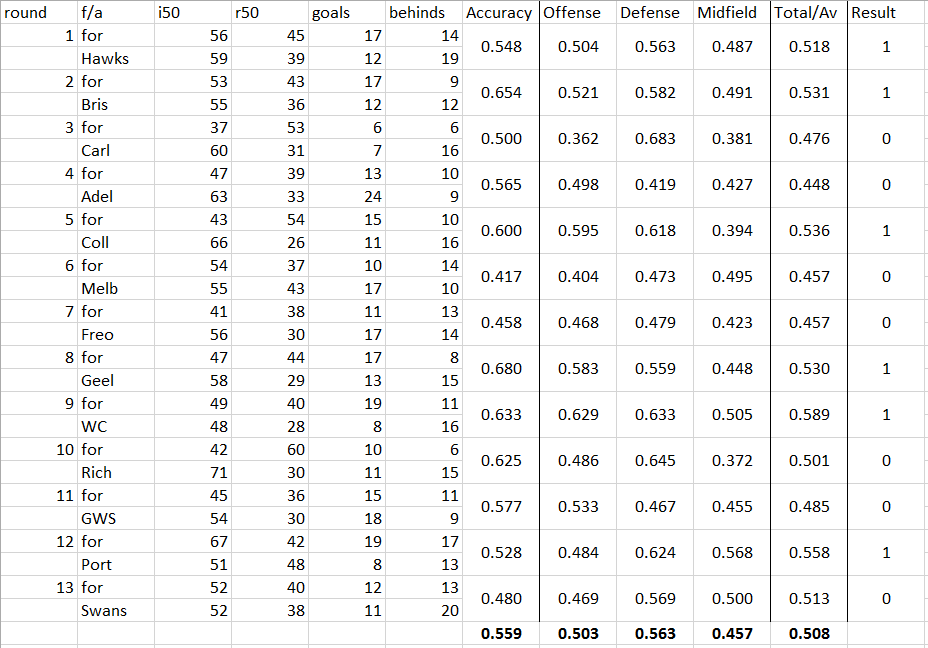Pre-amble: This isn’t a thread for the “■■■ what can you udnerstand with teh statz” crowd. I get it, the numbers aren’t for everyone and that’s OK.
The last few years I’ve become obsessed with the small but growing selection of AFL statistics blogs that are hoping too, somewhat, emulate the analytics scene which has taken off in the U.S. There are two main reasons I enjoy these blogs:
- Oddly, for people obsessed with numbers, they tend to be 5x better writers than the usual journalist hacks that TheAge and the Hun trot out (does anyone think Robbo spends more than 20 minutes on his “likes” column of a Monday morning).
- There are a number of metrics and perspectives they’ve developed that give me a fresh perspective on the game I love.
A few of these blogs and posts have gone viral (if you haven’t seen the Joel Selwood free kicks graphs do yourself a favour) but a lot of the key insights have been missed.
Firstly, improvement is gradual. Teams having huge swings in form is very rare. Seems obvious enough, yet we miss this time and time again. The Squiggle, one of the more straight forward blogs out there that assigns historically weighted Attack and Defence scores, picked up that the Dockers were done (or well on their way to being done) in the middle of 2015. The reason? They were consistently “under performing” their expectations: i.e. they were winning by smaller and more smaller margins over middling opposition. The wins and losses columns hid this, but the trend was unmistakable.The loss of Fyfe/Sandi at the start of 2016 merely hastened an already terminal decline. The Hawks drop off wasn’t quite so severe, but by the end of last year they were well and truly “back in the pack”. For the record, most blogs had the Swans as a very good team despite the 0-6 start. Why? The losses had been close, often very close (they lost a 1 pointer this year), and the worm eventually turns on such losses.
This brings us to point two, good teams DON’T always win the close ones. Close games are a coin toss. In 2015 the Hawks looked vulnerable mid year after dropping a handful of games. They weren’t. In every indicator they were playing amazing footy but they’d dropped a couple of close games to inspired sides. In 2016 this turned, and a few close wins masked a serious decline. Margins matter, a close win or loss shows that the sides were very even, and this form must then be put into a broader context.
Point three, attacking football is good football. This is slightly more controversial, Tony Corke looks really in depth at the issue here. He is hesitant with his conclusions in a manner befitting a serious analyst, but states “in finals, teams that were superior offensively and weaker defensively haeve won slightly more than 50% of their games”.The Squiggle is less diplomatic. If you look at the profile of past flag winners in the AFL era, there is an undeniable skew towards teams that have serious firepower. Of course, great teams are very good both offensively and defensively, but literally only a handful of teams with a “defense first” mindset have won premierships, the modern Swans sides, the Bulldogs last year, and Malthouse’s Eagles are about it. You need to score goals to be a contender, and we score goals.
So where are we? We are trending up. We are a top 4 side offensively and defensively, but with a bottom four midfield. Our form line was up heading into this match, and despite not getting the four points this improvement has continued. We’ve had an incredibly tough draw, and we are now hitting our ‘soft’ patch in very good form. If we were a stock, the time to buy would be now.
